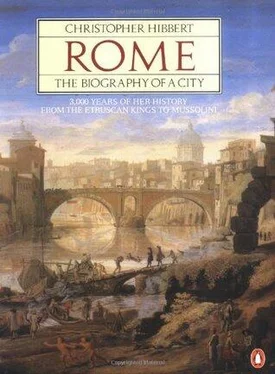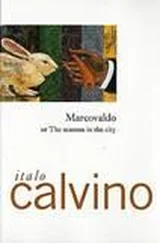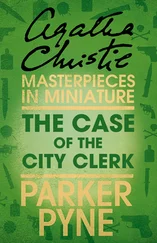Christopher Hibbert - Rome. The Biography of the City
Здесь есть возможность читать онлайн «Christopher Hibbert - Rome. The Biography of the City» весь текст электронной книги совершенно бесплатно (целиком полную версию без сокращений). В некоторых случаях можно слушать аудио, скачать через торрент в формате fb2 и присутствует краткое содержание. Жанр: Культурология, Искусство и Дизайн, на английском языке. Описание произведения, (предисловие) а так же отзывы посетителей доступны на портале библиотеки ЛибКат.
- Название:Rome. The Biography of the City
- Автор:
- Жанр:
- Год:неизвестен
- ISBN:нет данных
- Рейтинг книги:3 / 5. Голосов: 1
-
Избранное:Добавить в избранное
- Отзывы:
-
Ваша оценка:
- 60
- 1
- 2
- 3
- 4
- 5
Rome. The Biography of the City: краткое содержание, описание и аннотация
Предлагаем к чтению аннотацию, описание, краткое содержание или предисловие (зависит от того, что написал сам автор книги «Rome. The Biography of the City»). Если вы не нашли необходимую информацию о книге — напишите в комментариях, мы постараемся отыскать её.
Rome. The Biography of the City — читать онлайн бесплатно полную книгу (весь текст) целиком
Ниже представлен текст книги, разбитый по страницам. Система сохранения места последней прочитанной страницы, позволяет с удобством читать онлайн бесплатно книгу «Rome. The Biography of the City», без необходимости каждый раз заново искать на чём Вы остановились. Поставьте закладку, и сможете в любой момент перейти на страницу, на которой закончили чтение.
Интервал:
Закладка:
In many baths there were promenades lined with works of art, reading-rooms and libraries, exhibition halls and gymnasia. All manner of ball games were played in the baths and all sorts of sports were practised, particularly wrestling matches in which both men and women took part. The women's baths had beauty parlours, and outside both men's and women's were cafés and small shops.
The baths closed at sunset. Thereafter, however, there were many other places in which the Roman could enjoy himself when the circus and the amphitheatres were silent. There were, for instance, the brothels outside which prostitutes displayed themselves on benches. Many, if not most, of them were foreigners, often Egyptian or Syrian. They wore far more startlingly bright clothes than respectable women would choose, short tunics and togas and bangles round their ankles. Taxed by the authorities on the basis of the fees they charged their customers, they were allowed to parade the streets and were a common sight on the Via Sacra and in the Subura, the noisy, crowded area of the city which Juvenal called the ‘boiling Subura’. To be seen with these prostitutes occasionally was not considered reprehensible in a young man of good family. Venereal disease seems to have been known but was far from widespread.
The authorities regulated the opening hours of brothels, but tavern-keepers were not so circumscribed and a cooling drink was always available. So, too, was a game of chance; for, despite the prohibitions regularly imposed, gambling was a common pastime with most Roman citizens and an obsession with many. Bets were placed on games of backgammon, chess and draughts as well as on those simpler games played with marbles and dice, nuts and knuckle-bones. Stakes were high and passions ran hot. ‘When was gambling so reckless?’ Juvenal wondered. ‘Men now come to the gaming tables not with purses but with a treasure chest.’ For those with a taste for less risky and less exciting pursuits there were the lovely walks beyond the city walls, amidst the temples and porticoes, the statues and frescoes of the Saepta Julia, 13the shady cypress groves and olive trees of the Campus Martius.
By the time of Trajan's death the Roman people, whose city he had so enriched, had learned to address him as Optimus Princeps , the best of all rulers. They had even more cause to be grateful to his adopted son who succeeded him in 117, the restless, homosexual and complex Hadrian. Of Spanish extraction, Hadrian seems to have spent most of his early life in Rome where he became known as a young man of highly cultivated tastes and strong, if often irrational, opinions. As Emperor he did not care to have his artistic opinions questioned and he quarrelled so violently with Apollodorus over the designs for the Temple of Venus and Rome that he had him banished from the city and possibly had him executed too. This temple, designed by Hadrian himself and dedicated by him in 135, was but one of several buildings, original in conception and skilful in execution, for which the Emperor was responsible in Rome. 14His love of Greece, apparent in his beautiful villa at Tivoli, 15is also evident in the Pantheon, that wonderfully well-preserved Roman monument which, even in Hadrian's day, was the admiration of the civilized world.
The original Pantheon had been built between 27 and 25 B.C. by Agrippa to whom credit is still given in the inscription above the portico. But whereas Agrippa's building was renowned for its exterior, Hadrian's is remarkable for the huge circular hall behind the grey and red granite columns of the pedimented porch. Inside this hall, beneath the vast dome which, covered with sheets of gilded bronze, remained the largest in the world until modern times, stood statues of the gods covered with jewels, that of Venus, so Pliny said, wearing in the ears the two halves of the pearl which Mark Antony took from Cleopatra after she had drunk its twin dissolved in vinegar to win a bet. 16
Having rebuilt the Pantheon as a suitably magnificent temple for all the gods, Hadrian began to construct his own memorial, the mausoleum which in the later history of Rome became that awesome state fortress and prison known as Castel Sant’ Angelo. 17The mausoleum was not finished at the time of Hadrian's death in 138 and was completed by his adopted heir, Antoninus, who, because of his devotion to his country, his gods and his father, became known as Antoninus Pius.
For over twenty years Antoninus ruled over a largely peaceful Empire; but the long frontiers of this Empire were coming under ever more persistent attack and, after his time, emperors intent upon survival were increasingly preoccupied with its defence. Antoninus Pius's successor, the conscientious and idealistic Marcus Aurelius, spent most of his reign fighting the German tribes of the north, and the column which towers above the Piazza Colonna commemorates his triumphs. 18Yet Marcus Aurelius, who seems still to ride with noble purpose across the Capitol in the equestrian bronze statue which so impressed Michelangelo, was the last of the four good emperors of Rome's triumphant age. 19His cruel and arrogant son Commodus was possessed by so wildly consuming a passion for gladiatorial contests that he took part himself in almost a thousand combats, arriving in the amphitheatre wearing a gold crown studded with jewels and preceded by an attendant bearing the club and lion skin of Hercules with whom he had identified himself. In Hercules's honour he slaughtered animals in the arena with insensate relish before appearing in his role as gladiator. The Senators dutifully watched his performances, shouting their approval of his bloodlust, although as one of them, Dio Cassius, recorded, their overriding emotion was one of fear, since it was rumoured that Commodus, in celebration of Hercules's killing of the Stymphalian birds, had made up his mind to round off an invigorating display of his prowess by massacring a few spectators.
On one occasion, Dio Cassius said, ‘having killed an ostrich and decapitated it, he came up to where we Senators were sitting, holding the head in his left hand and raising aloft his bloody sword; and, without uttering a word, he wagged his head with a grin as though to threaten he would treat us in the same way.’ Frightened as they were, the Senators could scarcely restrain their laughter at the antics of their crazy master, yet knowing that any sign of amusement would have resulted in their being killed on the spot, they stuffed their mouths with the laurel leaves from their garlands.
The strangulation of the megalomaniacal Commodus on the orders of a commander of the Praetorian Guard inaugurated a period of intermittent civil war in which a succession of imperial reigns were brought to a violent end, usually at the instigation or with the cooperation of these powerful household troops. Commodus's successor, Pertinax, the son of a freed slave who after distinguished military service had become Prefect of the City of Rome, was murdered within three months. Then the rich Senator, Didius Julianus, who had bought the throne at an auction organized by the Praetorian Guard, was killed after nine weeks on the orders of the resolute and forceful north African, Septimius Severus, who had been proclaimed Emperor by his legions on the Danube. Severus died a natural death in Britain, reputedly bequeathing to his sons the advice to get on well with each other, to be generous to their armies and not to bother with anyone else. But Caracalla, the violent and emotional son who followed him, having had his brother murdered, was himself assassinated by Macrinus, the Praetorian Prefect, in 217. Macrinus himself became Emperor for a short time until he, too, was killed in a rebellion planned by the Syrian sister-in-law of Septimius Severus, Julia Maesa, who replaced him with her grandson. This new 14-year-old Emperor was a devotee and high priest of the Syrian sun-god, El-Gabal, who was worshipped in the town of his birth in the form of a conical black stone which was said to have fallen there from heaven. The boy was known as Elagabalus after this deity whose cult he brought to Rome without any attempt to assimilate it into Roman institutions.
Читать дальшеИнтервал:
Закладка:
Похожие книги на «Rome. The Biography of the City»
Представляем Вашему вниманию похожие книги на «Rome. The Biography of the City» списком для выбора. Мы отобрали схожую по названию и смыслу литературу в надежде предоставить читателям больше вариантов отыскать новые, интересные, ещё непрочитанные произведения.
Обсуждение, отзывы о книге «Rome. The Biography of the City» и просто собственные мнения читателей. Оставьте ваши комментарии, напишите, что Вы думаете о произведении, его смысле или главных героях. Укажите что конкретно понравилось, а что нет, и почему Вы так считаете.












